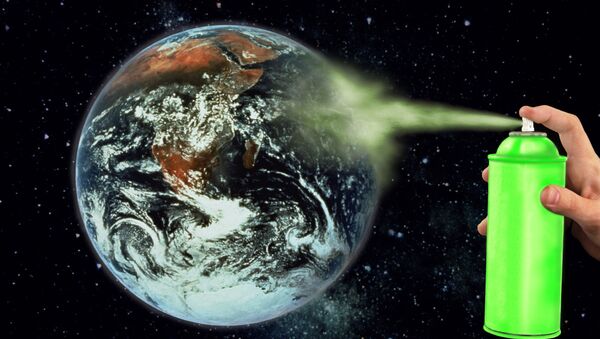Ozone levels above the Arctic reached their lowest point since 2011 back in March, due to ozone-depleting substances lingering in the atmosphere and a cold winter and intense polar vortex in the stratosphere, according to WMO spokesperson Clare Nullis.
— Copernicus ECMWF (@CopernicusECMWF) April 23, 2020
According to Science Direct, a “polar vortex refers to a region of the winter polar stratosphere characterized by high nearly zonal westerly winds and isolation from the rest of stratosphere.” The low temperatures caused by a polar vortex result in polar stratospheric clouds, which combine with polar stratospheric air to result in chlorine and bromine reactions that lead to ozone depletion.
"These two factors combined to give a very high level of depletion which was worse than we saw in 2011. It's now back to normal again ... the ozone hole has closed,” Nullis said during a UN briefing in Geneva, Switzerland.
However, when asked whether the ozone layer hole had closed due to COVID-19 pandemic-related restrictions on business and travel, which have decreased air pollution, Nullis revealed that the phenomenon was “completely unrelated to COVID.”
"Actually, COVID19 and the associated lockdowns probably had nothing to do with this," a Sunday Twitter post by the Copernicus Atmospheric Monitoring Service reads. "It's been driven by an unusually strong and long-lived polar vortex, and isn't related to air quality changes."
— Copernicus ECMWF (@CopernicusECMWF) April 26, 2020
Ozone depletion in the upper atmosphere is caused by substances known as chlorofluorocarbons (CFCs), which are made of of carbon, chlorine and fluorine molecules and are typically found in aerosol sprays, blowing agents for foams and packing materials, solvents and refrigerants.
The Montreal Protocol of September 1987, which has been signed by 197 countries, including Canada, the US and China, is an international treaty intended to protect the ozone layer by banning CFCs.

